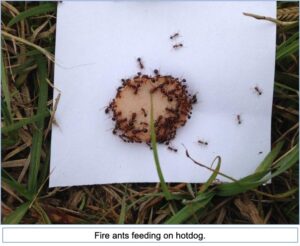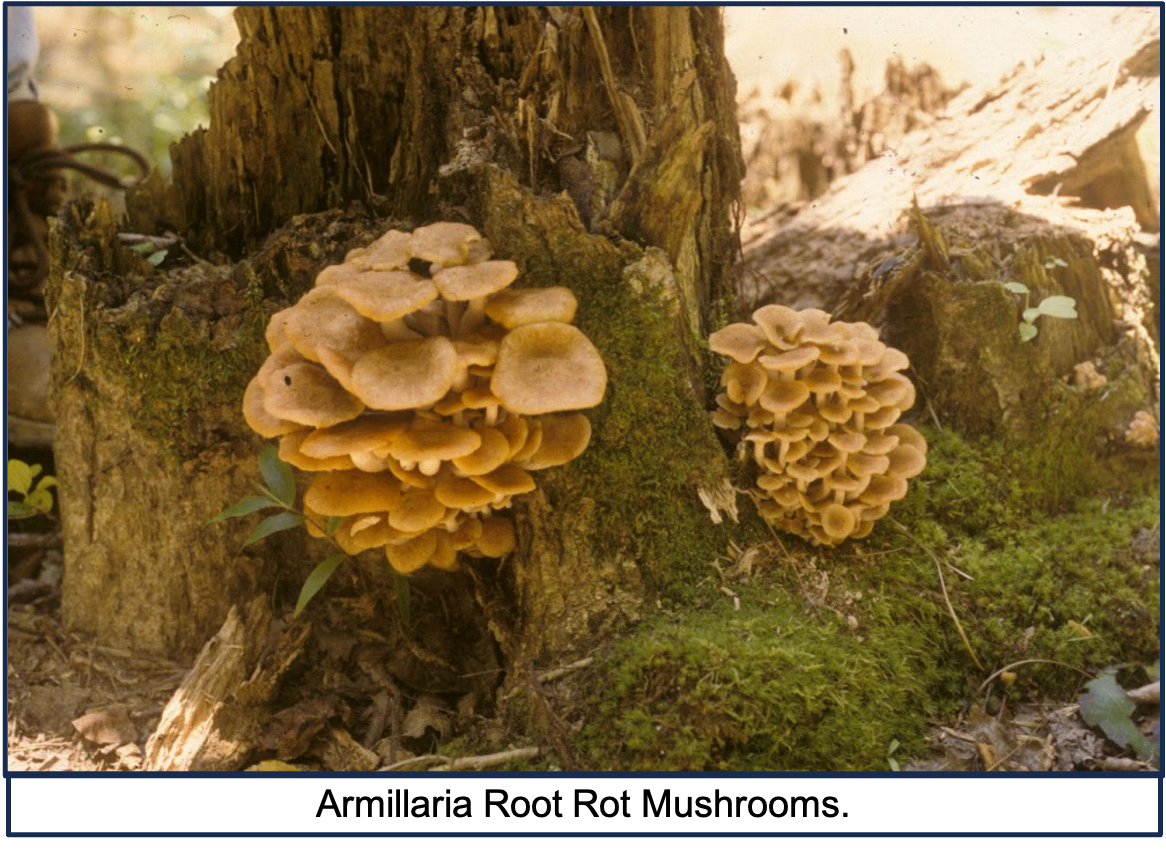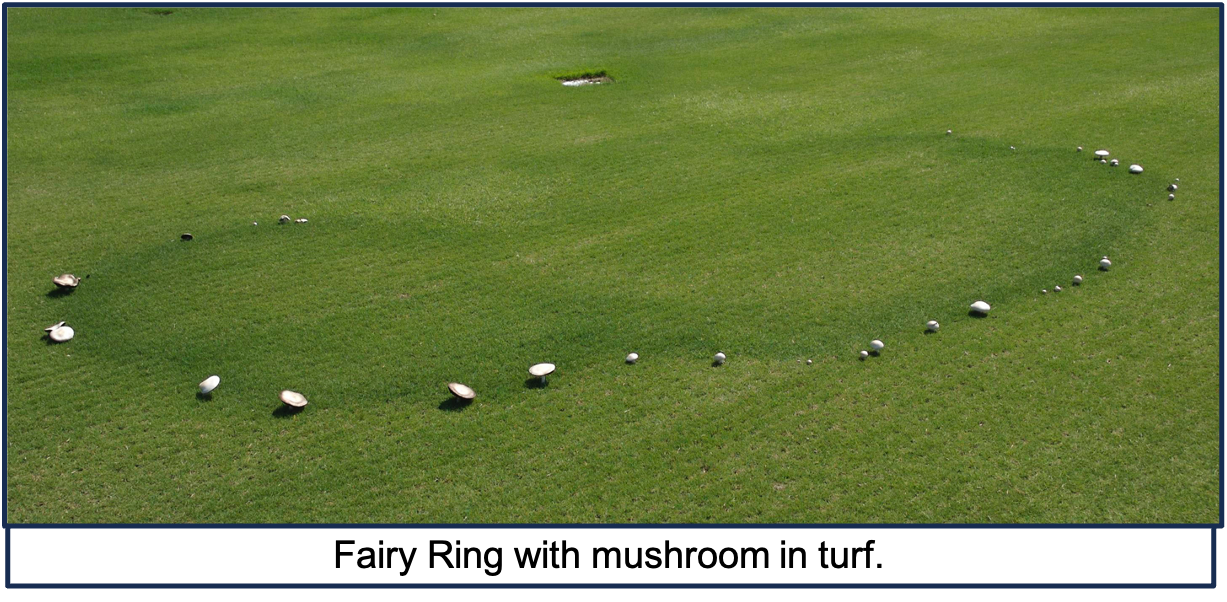Fire Ants & Mushrooms
go.ncsu.edu/readext?963880
en Español / em Português
El inglés es el idioma de control de esta página. En la medida en que haya algún conflicto entre la traducción al inglés y la traducción, el inglés prevalece.
Al hacer clic en el enlace de traducción se activa un servicio de traducción gratuito para convertir la página al español. Al igual que con cualquier traducción por Internet, la conversión no es sensible al contexto y puede que no traduzca el texto en su significado original. NC State Extension no garantiza la exactitud del texto traducido. Por favor, tenga en cuenta que algunas aplicaciones y/o servicios pueden no funcionar como se espera cuando se traducen.
Português
Inglês é o idioma de controle desta página. Na medida que haja algum conflito entre o texto original em Inglês e a tradução, o Inglês prevalece.
Ao clicar no link de tradução, um serviço gratuito de tradução será ativado para converter a página para o Português. Como em qualquer tradução pela internet, a conversão não é sensivel ao contexto e pode não ocorrer a tradução para o significado orginal. O serviço de Extensão da Carolina do Norte (NC State Extension) não garante a exatidão do texto traduzido. Por favor, observe que algumas funções ou serviços podem não funcionar como esperado após a tradução.
English
English is the controlling language of this page. To the extent there is any conflict between the English text and the translation, English controls.
Clicking on the translation link activates a free translation service to convert the page to Spanish. As with any Internet translation, the conversion is not context-sensitive and may not translate the text to its original meaning. NC State Extension does not guarantee the accuracy of the translated text. Please note that some applications and/or services may not function as expected when translated.
Collapse ▲Now that fall has arrived, many homeowners have noticed an increase in the number of fire ant mounds and mushrooms in their yards. While this might be a little surprising to some, there is nothing to be alarmed about as this simply is a response to the change in weather. With cooler temperatures and heavy morning dew, fungus that has been growing in your yard will begin to fruit and bare mushrooms, while fire ants will move their mound activity closer to the surface. These are natural shifts in the environmental cycle, which homeowners can use to their advantage.
Fire ants can be found in many locations within Pamlico County including sidewalks, lawns, fields, and roadsides. During periods of hot, dry weather (like this summer), fire ant colonies retreat underground and may go undetected for extended periods. However, as rain and cooler weather increases into early fall, these colonies will rise to the surface, aiding in detection and offering a final opportunity for control before winter weather forces them back deep underground.
 A common approach to fire ant control involves a two-step treatment using fire ant bait and individual mound treatments. First, ant bait products are broadcast near active mounds, which the ants will forage for and feed upon, spreading the active ingredient among the colony. Many of these bait products (Amdro Fire Ant Bait, Extinguish, etc.) contain active ingredients that prevent growth or reproduction resulting in death of insects. Bait products work best when conditions are dry, and insects can actively forage. To test for actively foraging fire ants, place pieces of cut hotdog or potato chips around the mound. If these items are quickly fed upon by foraging ants, then so will your bait. If, however, these food items do not elicit a response from the fire ant mound, then you may need to wait until conditions are more conducive to active foraging.
A common approach to fire ant control involves a two-step treatment using fire ant bait and individual mound treatments. First, ant bait products are broadcast near active mounds, which the ants will forage for and feed upon, spreading the active ingredient among the colony. Many of these bait products (Amdro Fire Ant Bait, Extinguish, etc.) contain active ingredients that prevent growth or reproduction resulting in death of insects. Bait products work best when conditions are dry, and insects can actively forage. To test for actively foraging fire ants, place pieces of cut hotdog or potato chips around the mound. If these items are quickly fed upon by foraging ants, then so will your bait. If, however, these food items do not elicit a response from the fire ant mound, then you may need to wait until conditions are more conducive to active foraging.
This process of bait application and foraging may take several days, so be patient. Follow-up mound treatments may need to occur 5-7 days later, targeting the remaining visible mounds that are still active. Mound treatments (Ortho Fire Ant Killer, Sevin, etc.) tend to work in hours to days. The active ingredients in these products require direct contact with fire ants, with some products requiring water to be applied to move the chemical down into the mound for greater contact. When using insecticides, always read and follow the label directions. This statement is emphasized because the efficacy of your application hinges on your ability to follow proper application methodology. Homeowners should also understand that a single application will not result in complete eradication of fire ants. Your goal should be to manage the population of fire ants within your landscape to a level where human interactions are reduced. For more information on fire ant management, visit this NC State Extension turf note.
Mushrooms typically pose little problems for home lawns. Most will pop up during specific periods of weather, be noticeable for a few days, then not be seen again. Applications of fungicides to control mushrooms in yards is not recommended, as it is costly, provides little impact on the mushrooms when present, and is a treatment for an issue that may not be causing any harm. If you must take action, remove the mushrooms by raking or mowing. Do not pick these mushrooms and consume them. For safety, it is best to assume that most mushrooms are toxic.
Typical mushrooms seen around this time of year include Armillaria Root Rot and Fairy Rings. Armillaria root rot produces brownish- or honey-colored mushrooms with fungus feeding on decaying wood debris within the soil. This fungus and mushroom can be a good indication that trees are infected with wood rot and should be considered as potential hazards. No control options are available to infected plants so just be on the look out and take note. Armillaria will also grow on old tree roots and stumps, so do not be surprised to see them where trees once grew. For an interesting note on this disease, visit the NC State Extension Plant Disease and Insect Clinic Blog.
Other common mushrooms seen in fall are fairy ring puffballs. Several different fungi create these rings, growing on the thatch within your turf. Prevention is the key to control, with fungicides applications made in the spring when soil temperatures reach 55 degrees Fahrenheit. For more information on fairy ring control, visit the NC State Extension turf note.
For more information on fire ants and mushrooms and their control, please contact Daniel Simpson at (252) 745-4121 or daniel_simpson@ncsu.edu.





